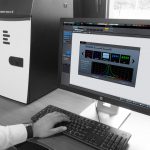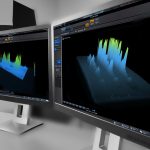SuperResolution
The aim of our SuperResolution technology is to generate a higher resolution image from the camera image. High resolution image offers a high pixel density and thereby more details about the original blot or gel. High resolution is required in molecular imaging applications for better performance in pattern recognition and images analysis. Many applications require zooming of a specific area of interest in the image and high resolution becomes essential in the separation of different protein signals in 2D gel, PCR gel or Western blotting applications.
Our imaging systems proposed two types of resolutions: the native resolution and the image resolution. The native resolution is given by the scientific camera sensor array size used. Our scientific imaging sensors are highly sensitive photon detector divided into a large number of light-sensitive small areas known as pixels which are used to build up the native image. The image resolution is the output of our SuperResolution imaging process.
SuperResolution imaging is a class of techniques that enhance the native resolution without compromising read noise, dynamic range, field of view and sensitivity. Sophisticated methods for image resolution up-scaling are easily available such as bicubic or bilinear interpolations. Our SuperResolution from single image approach differs from these techniques as its goal is to preserve the quantitative data from the original image. The mathematical algorithm decomposed the original image into a large number of small patches and reconstruct and fusion these patches to obtain a higher resolution. Rather than simply interpolating the unknown pixel values we infer their true value based on the information in the input. As a result, you experience a higher visual image with a very high level of details and more quantitative information.





